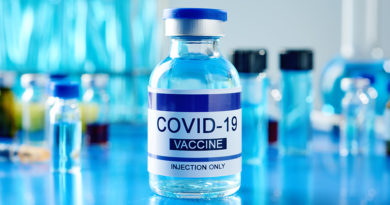Why do COVID-19 conspiracy theories persist on social media?

IIASA researchers have analyzed the discussion on eight different conspiracy theories that was spread widely on Twitter during the pandemic. Their work makes it possible to not only estimate the number of conspiracy related tweets, but also to compare the theories among themselves and identify patterns in their discussion.
COVID-19 affected people around the world in different ways, and the uncertainty that accompanied the unprecedented situation caused fear and anxiety for many. Throughout the pandemic, social media platforms like Twitter was an information source of choice due to the quick and easily digestible news updates that it provides. Unfortunately, these channels also contributed greatly to the spread of conspiracy theories, rumors, and lies, which in turn had an adverse effect on individuals’ compliance with public health measures. Rumors of lockdowns in northern Italy, for instance, resulted in crowds at railway stations and airports, which markedly increased the risk of infection.
In their paper just published in Social Media and Society, the researchers set out to analyze the changes that occurred in the discussion of different COVID-19 conspiracy theories on Twitter. Rather than measuring the number of conspiracy tweets relative to the total number of tweets as examined in previous studies, the researchers wanted to analyze the discussions around conspiracy tweets themselves: what specific theories were discussed, to what extent, and how the discussion frequency changed over time.
To do this, the team collected a data set of almost 1.3 million tweets associated with discussions on conspiracy theories between January 2020 and November 2021. The data set includes tweets related to eight conspiracy theories: the 5G, Big Pharma, Bill Gates, biological weapon, exaggeration, Film Your Hospital, Genetically Modified Organism (GMO), and vaccines conspiracies. The search criteria included all tweets that contain one or more COVID-19 related keywords, and conspiracy-specific keywords, according to research articles.
“Analyzing the distribution of tweets citing different conspiracy theories over time allowed us to instantly determine when the discussion of which theory prevailed and how the distribution changed over the time period we investigated,” explains study lead author Dmitry Erokhin, a researcher in the Cooperation and Transformative Governance Research Group in the IIASA advancing Systems Analysis Program.
The researchers found that conspiracy theories differed in terms of their development. Some peaked at the beginning of the pandemic such as the 5G conspiracy and the Film Your Hospital conspiracy; some grew throughout the pandemic, such as vaccine-related conspiracies and the Big Pharma conspiracy; others remained persistent throughout the pandemic such as the Bill Gates conspiracy and the exaggeration conspiracy; while some had two peaks such as the GMO conspiracy and the biological weapon conspiracy. Interestingly, the number of active COVID cases was a significant predictor for the frequency of conspiracy tweets a week later for seven out of the eight conspiracies.
But why do people believe conspiracy theories and spread them around? The researchers explain that risk perceptions play a large role in the emergence and proliferation of conspiracy theories. They emerge as an attempt to describe difficult and unexpected events with a high personal risk – a description that fits the COVID-19 pandemic very well. Fear and distrust drive people to try and find a seemingly logical explanation for the emergence of the pandemic and band together with like-minded individuals on different aspects of the pandemic, forming so called “echo-chambers” consisting of, for example, pro- and anti-vaccine groups.
According to the researchers, the continuation of the discussion of conspiracy theories over the relatively long duration of the pandemic may indicate a lack of information from the side of governments and experts to dispel them. It could also be one of the reasons for low COVID-19 vaccine acceptance and high vaccine hesitancy around the globe.
“Conspiracy theories are an important part of the COVID-19 discussion, and they influence people’s behavior. In this regard, it is important to be careful and critical in evaluating the information we receive, especially from social media. This makes our findings important for policymakers, as it can help them identify theories that remain persistent despite two years of pandemic development and anti-conspiracy news campaigns, and to develop measures aimed specifically at combating the remaining conspiracies,” concludes study coauthor Nadejda Komendantova, who leads the Cooperation and Transformative Governance Research Group at IIASA.
Reference
Erokhin, D., Yosipof, A., & Komendantova, N. (2022). COVID-19 Conspiracy Theories Discussion on Twitter. Social Media and Society. DOI: 10.1177/20563051221126051 [pure.iiasa.ac.at/18276]
About IIASA:
The International Institute for Applied Systems Analysis (IIASA) is an international scientific institute that conducts research into the critical issues of global environmental, economic, technological, and social change that we face in the twenty-first century. Our findings provide valuable options to policymakers to shape the future of our changing world. IIASA is independent and funded by prestigious research funding agencies in Africa, the Americas, Asia, and Europe. www.iiasa.ac.at
Journal
Social Media + Society
Article Title
COVID-19 Conspiracy Theories Discussion on Twitter
Article Publication Date
10-Oct-2022
Disclaimer: AAAS and EurekAlert! are not responsible for the accuracy of news releases posted to EurekAlert! by contributing institutions or for the use of any information through the EurekAlert system.


